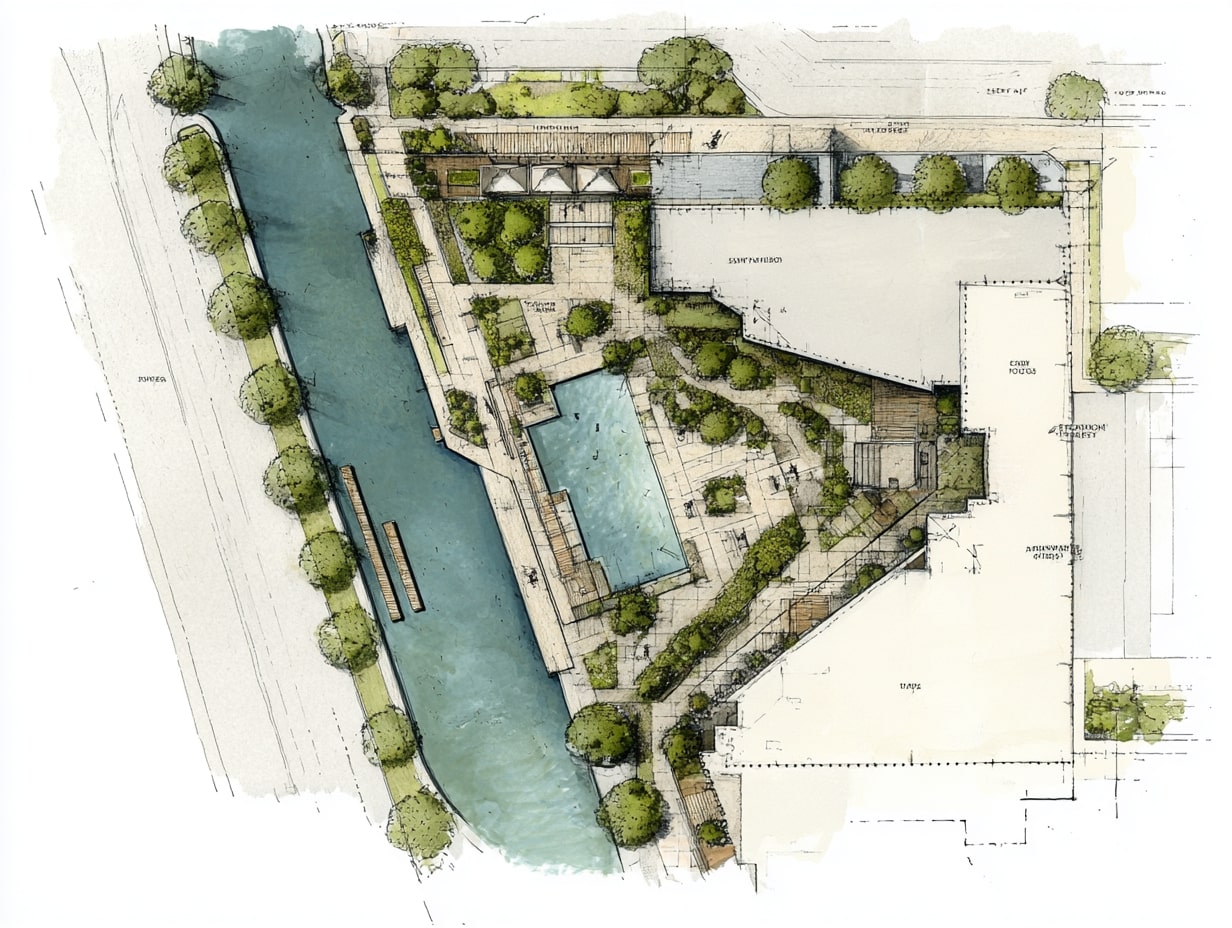- Home
- Articles
- Architectural Portfolio
- Architectral Presentation
- Inspirational Stories
- Architecture News
- Visualization
- BIM Industry
- Facade Design
- Parametric Design
- Career
- Landscape Architecture
- Construction
- Artificial Intelligence
- Sketching
- Design Softwares
- Diagrams
- Writing
- Architectural Tips
- Sustainability
- Courses
- Concept
- Technology
- History & Heritage
- Future of Architecture
- Guides & How-To
- Art & Culture
- Projects
- Interior Design
- Competitions
- Jobs
- Store
- Tools
- More
- Home
- Articles
- Architectural Portfolio
- Architectral Presentation
- Inspirational Stories
- Architecture News
- Visualization
- BIM Industry
- Facade Design
- Parametric Design
- Career
- Landscape Architecture
- Construction
- Artificial Intelligence
- Sketching
- Design Softwares
- Diagrams
- Writing
- Architectural Tips
- Sustainability
- Courses
- Concept
- Technology
- History & Heritage
- Future of Architecture
- Guides & How-To
- Art & Culture
- Projects
- Interior Design
- Competitions
- Jobs
- Store
- Tools
- More
The Pros and Cons of Being an Architect: Is It the Right Career for You?
Discover the rewarding yet challenging world of architecture. This article explores the creative satisfaction of designing impactful spaces while weighing the demands of tight deadlines, client expectations, and extensive education. Learn about the pros, cons, and dynamic nature of the profession to determine if architecture is the right career path for you.

Becoming an architect is a dream for many of us who are drawn to creativity, problem-solving, and the chance to shape the spaces where people live and work. It’s a career that combines art and science, offering the satisfaction of seeing our designs come to life. But like any profession, architecture comes with its own set of challenges and rewards.
While the allure of designing iconic buildings and leaving a lasting impact is exciting, the path isn’t always smooth. Long hours, tight deadlines, and client demands can test our patience and resilience. At the same time, the sense of accomplishment we feel when a project is completed can make all the hard work worthwhile. Let’s explore the highs and lows of being an architect to help us better understand this dynamic profession.

Table of Contents
ToggleUnderstanding The Role Of An Architect
Architects design buildings and spaces that balance aesthetics, functionality, and safety. We transform client visions into viable structures while adhering to building codes, environmental regulations, and budget constraints. Our work often involves creating detailed drawings, 3D models, and specifications to guide construction teams.
Collaboration forms a core part of this role. We coordinate with engineers, contractors, and interior designers to ensure projects are completed to standard. This teamwork helps address challenges like structural integrity, material selection, and energy efficiency.
Project management responsibilities are significant. Architects monitor timelines, manage budgets, and address unexpected setbacks to keep projects on track. Balancing creative and administrative duties requires both technical skills and effective communication.
Architects also research materials and technologies to innovate sustainably. For example, incorporating renewable energy systems or using eco-friendly materials enhances building performance. This adaptability keeps designs relevant in a world prioritizing environmental impact.
The Pros Of Being An Architect
Being an architect combines creativity, technical knowledge, and problem-solving. It offers numerous benefits personally and professionally, making it a fulfilling career path.

Creativity And Design Opportunities
Architects channel artistic vision into functional designs. This career allows us to design diverse structures, from residential homes to iconic skyscrapers. The freedom to blend innovation with practicality makes architecture an appealing profession.
High Job Satisfaction
Seeing projects evolve from blueprints to finalized buildings provides immense satisfaction. We experience a unique sense of accomplishment when our designs meet client needs and contribute to their environments.
Potential For Good Earnings
The architectural profession offers competitive salaries. According to the Bureau of Labor Statistics, the median pay for architects in 2022 was $80,180 annually, with top earners making over $120,000, depending on experience and location.
Career Versatility And Growth
Architecture offers various career paths, including urban planning, landscape design, and sustainable architecture. These options allow us to expand skills continuously and adapt to industry trends.
Making A Tangible Impact On The World
Architects leave a lasting legacy by shaping communities and enhancing spaces’ functionality and aesthetics. Through sustainable designs, we participate in efforts to reduce environmental impact and promote responsible development.
The Cons Of Being An Architect
While architecture offers creative fulfillment and financial opportunities, the profession also has notable challenges. These obstacles, from demanding schedules to balancing diverse expectations, require resilience and adaptability.

Long Hours And High Stress
Architecture often demands significant time and energy, leading to long hours and elevated stress. Tight deadlines, overlapping project phases, and unexpected changes frequently extend workdays, particularly near project milestones. Dealing with multiple stakeholders, including clients and contractors, adds to the complexity and pressure of managing ongoing projects.
Costly And Time-Intensive Education
Pursuing architecture as a career requires substantial investment in both time and money. Earning a professional degree, such as a Bachelor of Architecture (5 years) or a Master of Architecture (1-3 years), is mandatory for licensure. Tuition for these programs often exceeds $25,000 annually in many universities. Additionally, completing practical training through internships and preparing for licensing exams prolongs the timeline before earning a stable income.
Challenges With Job Stability
Architectural employment can fluctuate due to economic cycles. Slowdowns in construction and development sectors significantly impact job availability, leaving architects vulnerable during recessions or funding cuts for large-scale projects. This uncertainty can result in periods of unemployment or underemployment, particularly for less-experienced professionals.
Balancing Artistic Vision And Client Demands
Architects frequently navigate the tension between creative freedom and client expectations. While clients hire architects for their expertise, budget constraints, functional priorities, and personal preferences can limit design possibilities. Ensuring client satisfaction often requires compromising artistic ideals, which can affect job satisfaction for those prioritizing creative expression.
Is Architecture The Right Career For You?
Choosing a career in architecture depends on your skills, interests, and long-term goals. Architects rely on a blend of creative thinking, technical precision, and problem-solving to succeed. If you enjoy designing, working within structured parameters, and collaborating with diverse teams, architecture may align with your strengths.
The education pathway for architects is rigorous but rewarding. Earning a professional degree, completing internships, and passing licensure exams require time, financial commitment, and dedication. However, for those passionate about architecture, this process builds the foundational knowledge and experience needed for success.
Career satisfaction often stems from the tangible results of architectural work. Seeing designs materialize into functional structures brings pride and a sense of accomplishment. Nevertheless, the demanding schedules, tight deadlines, and high-pressure environments necessitate resilience and strong time management skills.
Architects also face evolving industry challenges. Sustainability, urbanization, and client expectations push architects to balance innovation with practicality. Adaptability and continuous learning are essential for thriving in this dynamic field.
If the balance of creativity, responsibility, and technical expertise excites you, architecture could be a fulfilling choice. However, it’s crucial to weigh the demands and rewards to ensure this career suits your lifestyle and aspirations.

Conclusion
Architecture offers a compelling blend of creativity, technical expertise, and personal fulfillment, making it a unique career choice. We experience the joy of transforming concepts into built environments that impact communities while navigating challenges like demanding schedules, economic fluctuations, and client expectations. For those drawn to innovation, problem-solving, and the opportunity to shape our surroundings, architecture remains both rewarding and demanding.
Evaluating the pros, such as job satisfaction, career versatility, and competitive earnings, against the cons, like educational costs, high stress, and job market sensitivities, helps clarify whether architecture aligns with individual aspirations. By understanding the industry’s dynamic nature and preparing for its demands, we can better determine if its rewards outweigh its challenges.
- advantages of architecture career
- architect career advice
- architect job requirements
- architect salary expectations
- architecture career growth
- architecture career opportunities
- architecture career path
- architecture degree benefits
- architecture job satisfaction
- benefits of being an architect
- Career in Architecture
- challenges of being an architect
- day in the life of an architect
- disadvantages of architecture profession
- drawbacks of being an architect
- how to become an architect
- is architecture a good career
- is architecture right for me
- pros and cons of being an architect
- rewards of an architecture career
- should I become an architect
- skills needed to be an architect
Submit your architectural projects
Follow these steps for submission your project. Submission FormLatest Posts
General Arrangement Drawings in Architecture: The Backbone of Clear Design Communication
General Arrangement Drawings explained: what they are, when to use them, how...
The Ultimate Guide to Fencing in North Dakota: Choosing the Best Fence for Your Property
Watching a chain link fence twist in 70 mph winds near Minot...
Gaudí: Where Architecture Meets Science
Gaudí: Where Architecture Meets Science shows catenary arches, ruled surfaces, and biomimicry...
How Housing Market Forces Shape Architectural Design Today
Architecture never exists in isolation. Buildings rise from a mix of ambition,...












Leave a comment